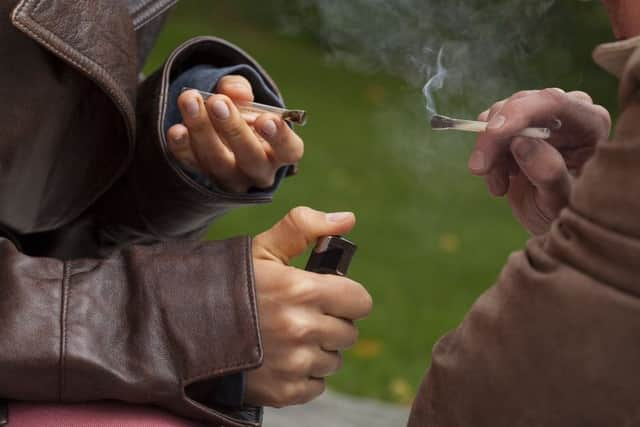Legalising drug encourages teenagers to take it


In the first study of its kind to analyse how decriminalising changes perceptions among teenagers it found this effect was greater on younger children than older ones.
US researchers said changing the law reduced the stigma and perceived risks attached to the drug while making it cheaper and more readily available.
Advertisement
Advertisement
The study compared attitudes to the drug both before and after changes to the legalisation in Washington State in July 2014 and Colorado in January 2014.
These were compared to other states which allows medical use of the drug or had an outright ban.
It found the perceptions of marijuana’s harmfulness decreased by 14 per cent and 16 per cent among eighth and 10th graders - those aged 13 to 16 - and also increased their past-month marijuana use by 2 per cent and 4 per cent in Washington state but not in Colorado.
Where a ban still exists the perceived harmfulness also decreased by 5 per cent and 7 per cent for the pupils in the same age brackets but use decreased by 1.3 per cent and 0.9 per cent.
Advertisement
Advertisement
Among older teenagers aged 17 and 18 in Washington state and all adolescents surveyed in Colorado, there were no changes in perceived harmfulness or marijuana use in the month after legalisation.
In the 20 states that had medical marijuana laws but no recreational marijuana law results were unchanged.
Associate Professor Dr Magdalena Cerdá at University of California Davis said: “While legalisation for recreational purposes is currently limited to adults, potential impacts on adolescent marijuana use are of particular concern.
“Some adolescents who try marijuana will go on to chronic use, with an accompanying range of adverse outcomes, from cognitive impairment to downward social mobility, financial, work-related and relationship difficulties.
Advertisement
Advertisement
“We need to better understand the impact of recreational marijuana use so we’re better prepared to prevent adverse consequences among the most vulnerable sectors of the population.”
Explaining the differences in perception between Washington and Colorado, Prof Cerdá said legalisation in Washington reduced the stigma and perceived risk of use, which could explain why younger adolescents are using more marijuana after legalisation.
She added: “Other potential reasons for the increase in use include increased access to marijuana through third-party purchases, and lower price.
“Older adolescents may also have had their attitudes and beliefs about marijuana formed before recreational marijuana use was legalised, making it less likely their use would change after legalisation.”
Advertisement
Advertisement
On the other hand before a change in the law, Colorado teens experienced a more robust commercialisation drive prior to the law taking effect.
The state also had very developed medical marijuana dispensary systems before recreational use became legal, with substantial advertising which youth were exposed to.
Colorado also had lower rates of perceived harmfulness and higher rates of use compared to Washington state and other states where recreational use is not legal.
Currently three states have legalised cannabis since 2014 and a voters in a further three approved changes.
Advertisement
Advertisement
Professor Deborah Hasin at Columbia University’s Mailman School of Public Health said: “The perceived harmfulness of marijuana has declined sharply in the US in the last few years, despite the fact that there are adverse consequences associated with marijuana use in some adults and in adolescents.
“Epidemiologic monitoring of these consequences as more states legalise recreational use, and public education about potential health consequences, are important to protect public health.”
The study involving nearly 254,000 Colorado and Washington state students in the eighth, 10th and 12th grades in the Monitoring the Future survey was published in the journal JAMA Pediatrics.